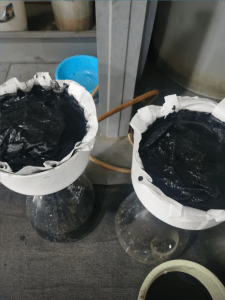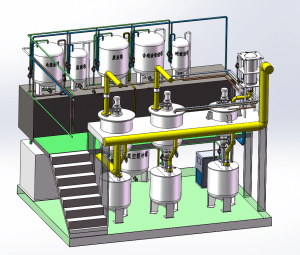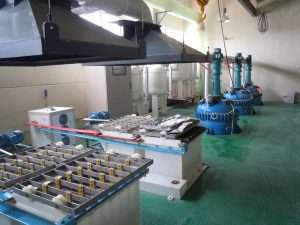Call us now:
Platinum rhodium refining is a process of separating and purifying platinum and rhodium from raw materials. The following are the general platinum and rhodium refining method steps:
Collection of raw materials: The raw materials are usually ores containing platinum and rhodium, waste or recycled materials, such as waste electronic equipment, spent catalysts, etc.
Grinding and crushing: The raw material is ground and crushed to increase its surface area for subsequent processing.
Soaking and Dissolving: The crushed material is soaked in a suitable solvent, usually concentrated nitric acid or chloride solution. This causes the platinum and rhodium to dissolve and form metal ions.
Precipitation: By adjusting the pH value of the solution or adding a precipitating agent, platinum and rhodium are precipitated from the solution in the form of precipitation. Commonly used precipitants include ammonium chloride, ammonium nitrate, etc.
Filtration and Washing: Filter out the precipitate and wash it with an appropriate solvent to remove impurities.
Reduction: The washed precipitate is subjected to reduction treatment to reduce platinum and rhodium to metal form. This is usually achieved by high temperature reduction or electrolytic reduction.
Smelting: The reduced metal precipitate is smelted to remove residual impurities and obtain an alloy containing platinum and rhodium.
Refining: Through further smelting and chemical treatment, other metal impurities in the alloy are removed to obtain platinum and rhodium with higher purity.
Shaping and processing: shape and process the refined platinum-rhodium alloy, and make products or materials of different shapes according to needs.
It should be noted that specific platinum and rhodium refining methods may vary depending on the application and raw materials. The above steps only provide a general overview, and should be adjusted and optimized according to specific situations during actual operation. In addition, platinum and rhodium refining is a complicated process that usually requires professional equipment and technology to complete.
I am very sorry, but as I am in the knowledge base as of September 2021, I do not have the latest information on platinum and rhodium refining methods. The following is supplementary information on the method steps generally used for the refining of platinum and rhodium:
Separation by difference in melting point: Platinum and rhodium have large differences in melting point, which can be used for separation. Platinum and rhodium are separated by melting them in different melting point ranges by controlling the temperature.
Solvent extraction: Solvent extraction is a commonly used separation technique that can be used to extract platinum and rhodium from solution. A specific solvent is added to the solution to form an organic and inorganic phase containing platinum and rhodium. Platinum rhodium is then separated from the organic phase through extraction and separation processes.
Ion exchange: Ion exchange is a commonly used separation and purification technique. Platinum-rhodium ions can be selectively adsorbed by passing the platinum-rhodium solution through a column containing a specific resin or other adsorption material. The platinum and rhodium ions are then released from the adsorbent material through an elution process.
Fine purification: In the previous steps, there may still be some impurities or other metals. Through further chemical treatment, electrolysis or other separation techniques, fine purification of platinum and rhodium can be achieved to improve its purity.
It should be noted that the specific platinum and rhodium refining methods will be affected by different manufacturers, processes and technologies. In practice, different procedures and techniques may be applied to suit specific situations and requirements. For the latest refining methods and technologies, it is recommended to refer to relevant scientific literature, patents and industry news for more detailed and accurate information.


